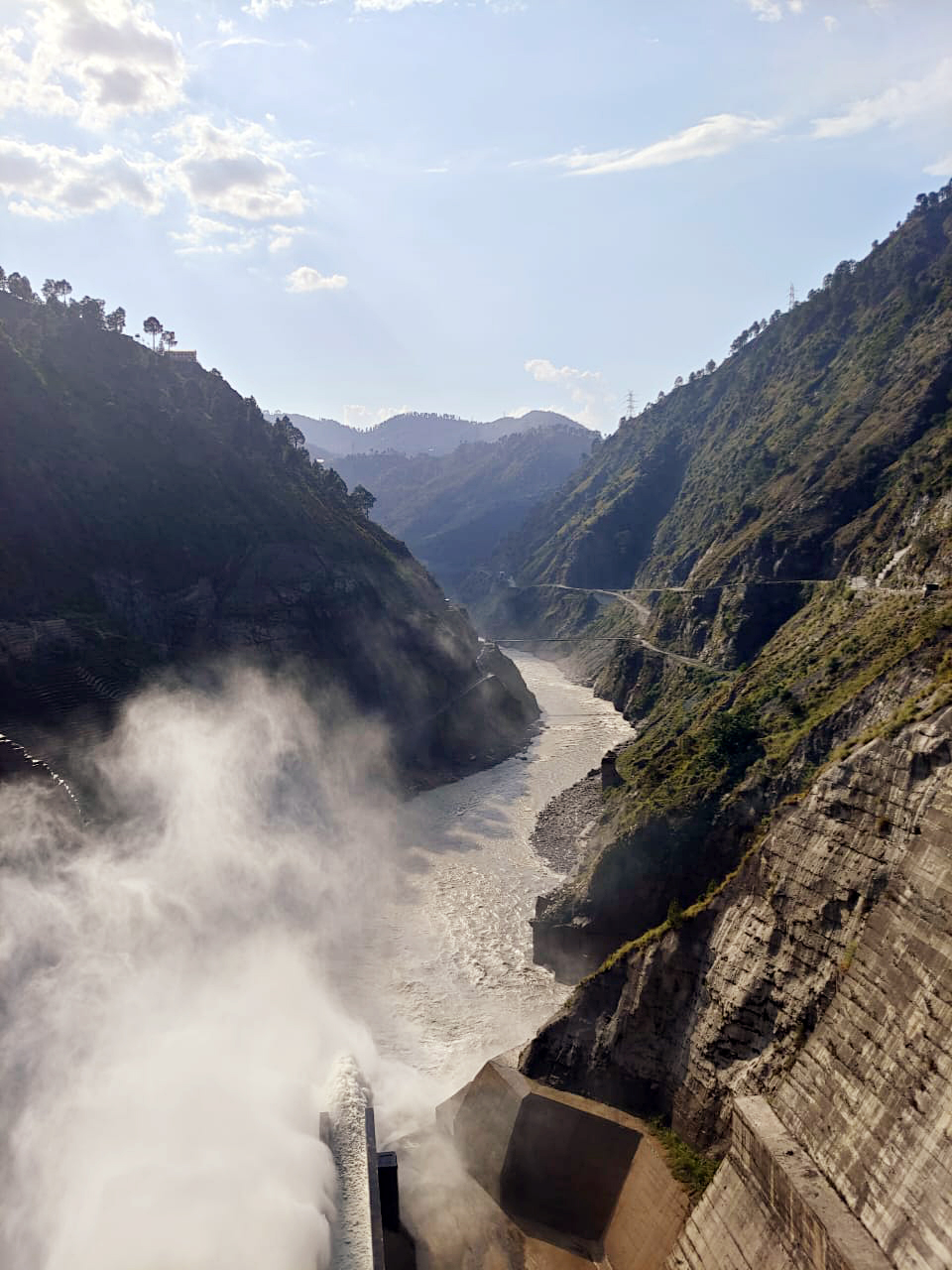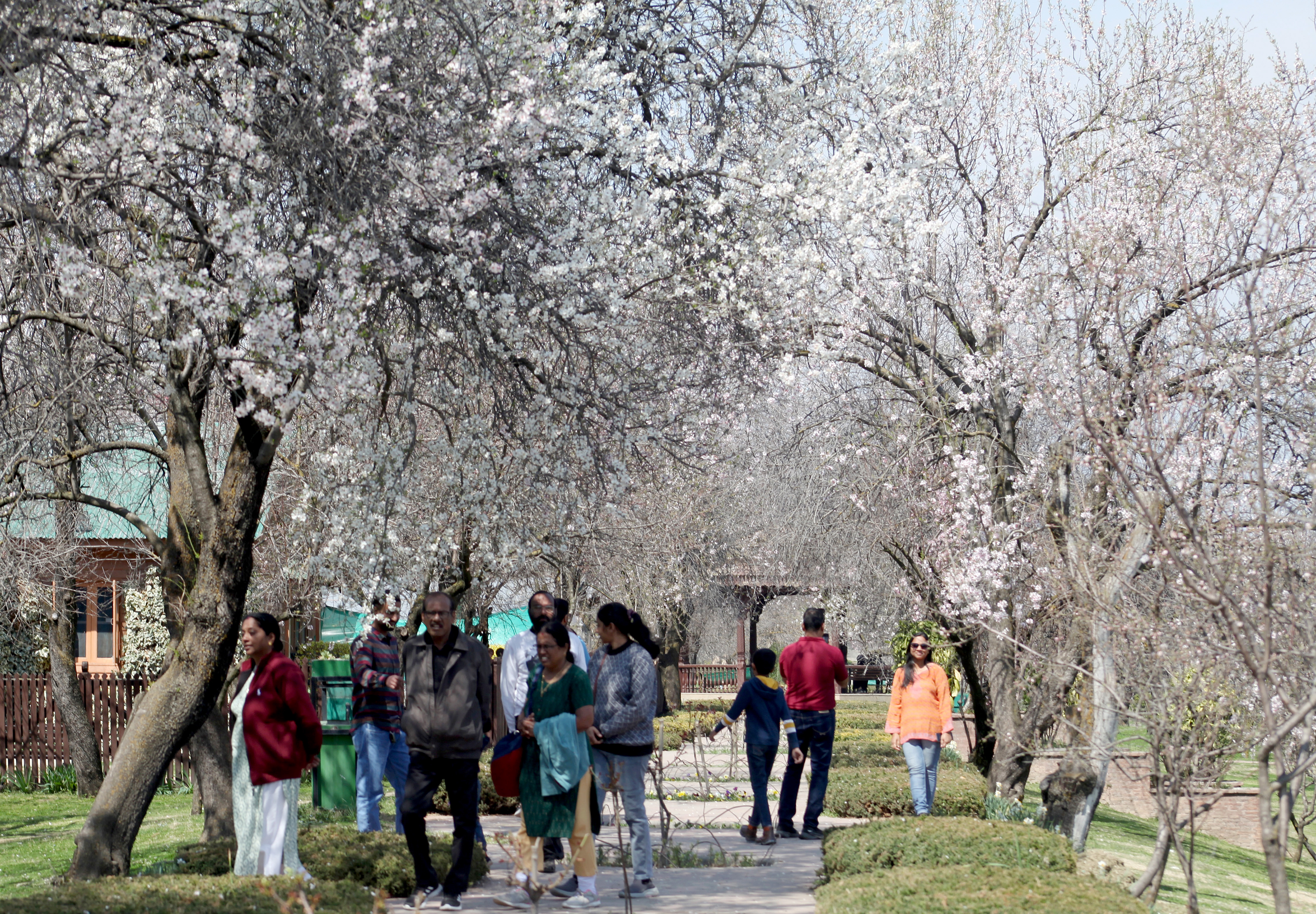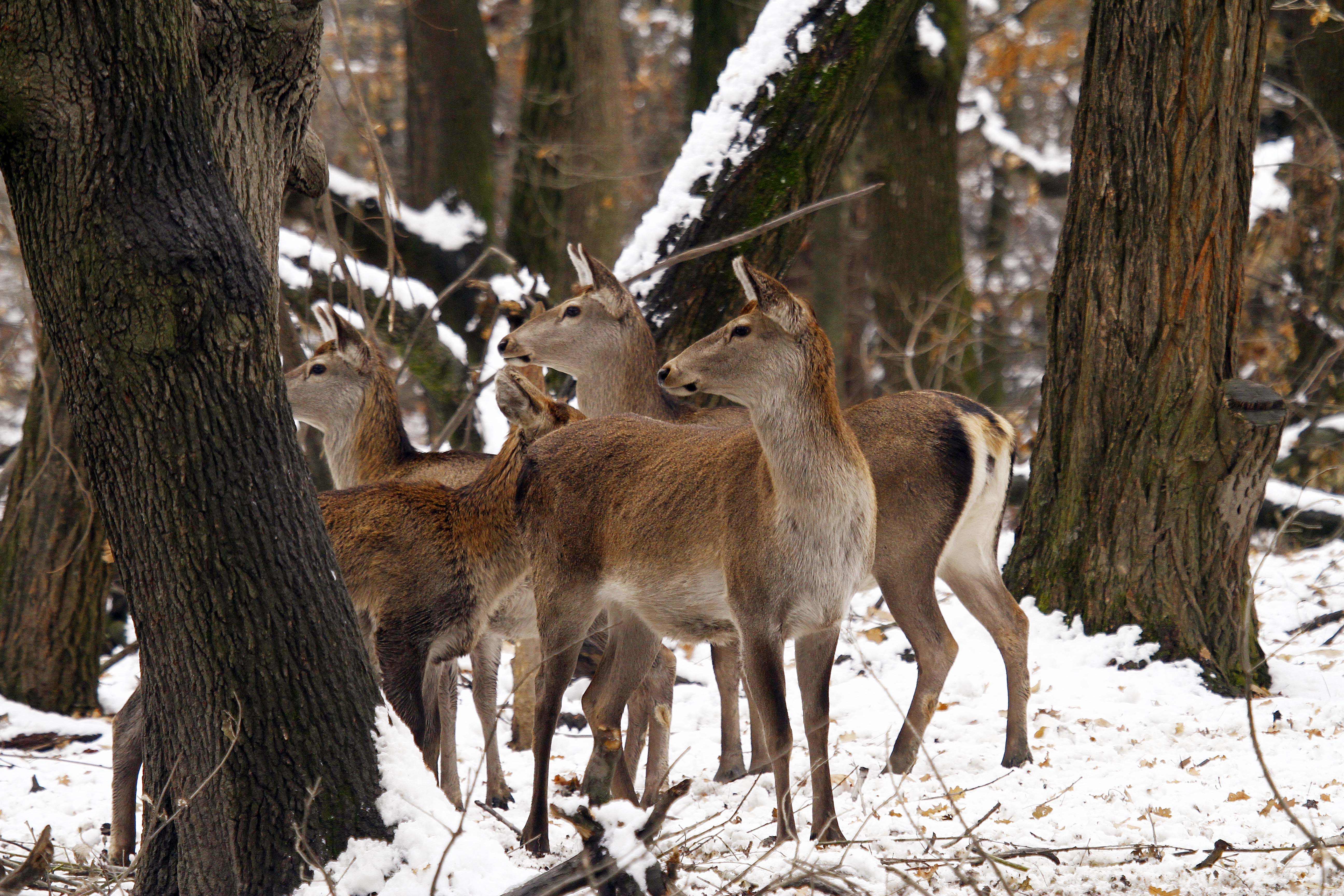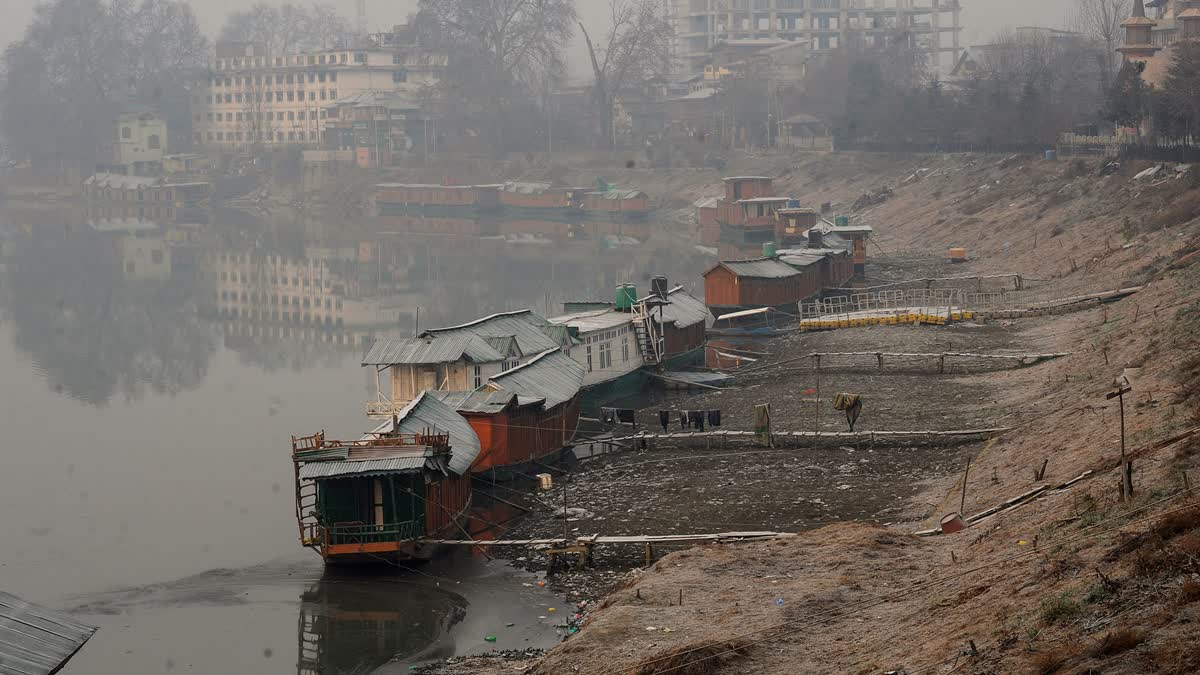Srinagar: A notable rainfall deficit in Jammu and Kashmir has resulted in a prolonged dry spell in the region raising concerns about forest fires, declining water levels, and potential impacts on agriculture and electricity production in the upcoming summer season.
Officials caution that the situation could get worse in the upcoming weeks as there hasn't been any notable precipitation since the year began.
Deepening Rain Deficit
According to official data, the Union Territory has witnessed a staggering 79% rainfall deficit from January 1 to February 12, receiving just 29.8 mm of precipitation against the expected 140 mm. Jammu and Udhampur districts, in particular, experienced shortfalls of 94% and 92%, respectively, while Kathua, the worst-hit district, had a 97% shortage, data said.
The summer capital of the region, Srinagar, had 82% deficit, while Shopian, Reasi, Ramban, Kulgam, Doda, Budgam, and Anantnag were among the districts with deficits ranging from 80% to 89%. Deficits in Bandipora, Baramulla, Kupwara, and Pulwama ranged from 70% to 79% as per data. Even the better-performing districts like Poonch, Rajouri, Kishtwar, and Ganderbal have inadequacies ranging from 60% to 69%.
Dry Spell Sparks Forest Fires
Over two dozen forest fire occurrences have been documented in the last two months, indicating that the dry season has increased the risk of forest fires. Officials attribute the increase to the lack of rainfall and strong winds, which have created an environment highly susceptible to fires.
“Even a small spark can turn into a devastating wildfire,” said Suresh Kumar Gupta, Principal Chief Conservator of Forests. “We are on high alert and have deployed fire-fighting teams to control the situation.”
Most fires have been reported from Tral, Udhampur, Reasi, and Poonch, regions that typically experience higher wildfire activity. Experts warn that climate change has made Kashmir’s forests more vulnerable, with shifting precipitation patterns leading to drier conditions.
Meanwhile, the water crisis is getting worse as a result of major rivers and streams running at record low levels. Considered the lifeline of Kashmir, the Jhelum River has significantly diminished. Sangam's water level is -1.01 feet below the Reduced Level (RL) zero gauge, while Ram Munshi Bagh and Asham's water levels have fallen to 3.52 feet and 0.75 feet, respectively.
The Irrigation and Flood Control Department pointed to inadequate snowfall, which typically replenishes water reservoirs, as the cause of the drop in levels. Other tributaries that are flowing below normal include Lidder, Rambiyara, Ferozpora, and Pohru.
Hydropower Generation Hit
In Jammu and Kashmir, hydropower generation too has significantly decreased due to a shortage of water. Officials report that overall hydroelectric output has decreased by 84.17%. In January, the Power Development Department (PDD) generated around 250 megawatts (MW), but that figure has since dropped to just 190 MW.

“The availability of water for power generation is declining due to shorter snow periods and increasing temperatures,” said a senior PDD official. “We are doing our best to optimize production, but climate change is making things unpredictable.”
The region has a total hydropower generation capacity of 1,200 MW, with 900 MW coming from the Baglihar Hydroelectric Project. However, current output remains well below full capacity due to water shortages.
The dry weather is also having an impact on fruit growers; experts warn that fruit trees may flower too soon as a result of rising temperatures and a lack of moisture. This phenomenon could severely impact apple orchards, the backbone of Kashmir’s horticulture industry.
“If dryness continues beyond February 20, early flowering may occur, and subsequent erratic weather could disrupt pollination, reducing fruit yields,” said Dr Parvez Ahmad, a scientist at SKUAST-Kashmir.

Dr Tariq Dar, another expert, noted that while warm weather reduces fungal diseases, it also makes trees more susceptible to insect infestations. “Prolonged heat can cause sunburn on fruit and tree stems, affecting overall quality,” he said. “Farmers should focus on soil moisture retention and mulching to mitigate risks.”
Despite the water crisis, officials assured that the region’s wetlands, which host migratory birds, remain stable. “We have enough water in Hokersar, Shallabugh, and other wetlands, though minor concerns exist at Mirgund,” an official overseeing wetland management said.
Similarly, wildlife in Dachigam National Park remains unaffected, with animals able to access water in higher elevations. “There is adequate snowfall in Gulmarg, Sonamarg, and Baltal, ensuring a steady water supply for wild animals,” a senior wildlife official said.

Khelo India Winter Games Deferred Amid Dry Spell
Due to inadequate snowfall, the fifth edition of the Khelo India Winter Games (KIWG) has also been postponed. Originally, the events were supposed to take place in Gulmarg from February 22 to 25, 2025.
"The decision has been taken in view of inadequate snowfall in Gulmarg. A fresh assessment will be conducted once snow conditions improve, and a revised schedule will be announced accordingly," a senior official of the J&K Sports Council told ETV Bharat.
"In consultation with the technical committee, it has been decided to postpone the event, as key ski slopes of Affarwat lack sufficient snow. The next decision will be taken after February 19, as the weather office has predicted wet weather conditions, with Gulmarg expected to receive fresh snowfall."
Weatherman Predicts Brief Respite
The Meteorological Department has predicted a brief respite, with a fresh Western Disturbance expected to bring rain and snow to Jammu and Kashmir between February 19 and 20.
“Plains in Kashmir and Jammu may receive light to moderate rainfall, while higher reaches in Chenab Valley and South Kashmir could see up to 10 inches of snowfall,” said Mukhtar Ahmad, Director of the MeT Department.
Read more:



